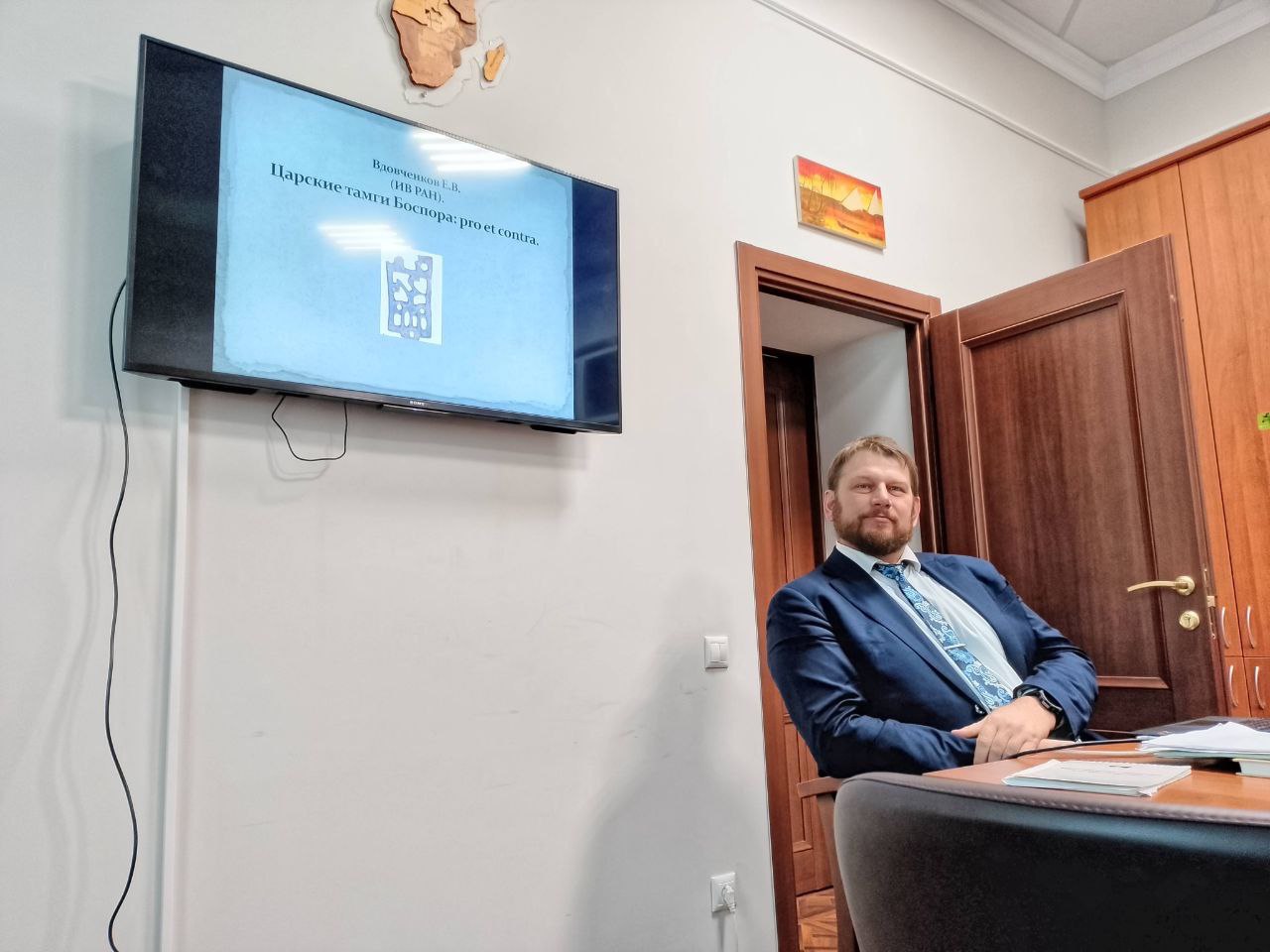News
4 апреля 2025 года
Presentation "The Royal Tamgas of the Bosporus: pro et contra"

On April 7, 2025, the meeting of the seminar "Ex Oriente lux" was held at the Department of Anthropology of the East. At it, Leading Research Fellow, Prof. Evgeny Vdovchenkov spoke about tamgas - the signs of family and clan affiliation that appeared in Europe in the Sarmatian era.
The problem of the "royal tamgas" is closely connected with the Sarmatization of the ancient centers of the Northern Black Sea region. The classical historiographical tradition attributes them to the Bosporan rulers of the 1st-4th Centuries CE. Tamgas are depicted on slabs with official Greek inscriptions and on anepigraphic foundation slabs, on belt sets, horse harnesses, sometimes on coins, ceramics, and tiles.
The speaker devoted part of his speech to examining the arguments presented by the epigraphy specialist Natalia Zavoykina, who spoke out against the interpretation of some of these tamgas (signs of the 2nd-3rd Centuries CE) as tamgas of the kings of Bosporus. She suggested that such signs could not have been royal, but signs of four families of two clans of the Aorsi-Tanaites, who were settled in Tanais, divided by ethnicity into two communities, Hellenes and Tanaites, after the middle of the 2nd Century CE.
In his presentation, Prof. Vdovchenkov considered this point of view, and also cited the opinions of opponents - in order to analyze in detail the arguments for and against. At the same time, the heuristic value of tamgas for the political, social and cultural history of Bosporus and Barbaricum was demonstrated. The seminar participants also discussed the problems associated with this historical source.

